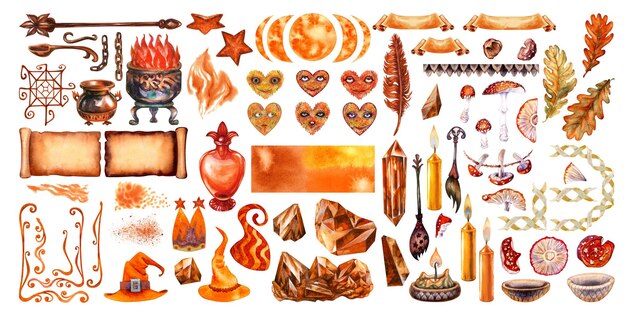How RPG Elements Enrich Storytelling Depth
Have you ever found yourself lost in the pages of a fantasy novel or caught up in an epic Dungeons & Dragons campaign, where the lines between imagination and reality blur in the most delightful way? 🧙♂️ That’s the magic of RPG elements woven into storytelling! These elements breathe life into characters, create worlds that are as vivid as they are boundless, and invite us on thrilling adventures that are limited only by our creativity. By blending traditional fantasy with the interactive essence of role-playing games, storytellers like Kenneth York craft tales that are not just read, but experienced. So, grab your dice and your sense of wonder as we explore how these creative writing techniques enrich the very soul of storytelling. 🎲📚 Learn more about storytelling in gaming here.
The Magic of RPG Characters

RPG elements bring a unique charm to storytelling through the creation of intricate characters and compelling narratives. These characters often transcend traditional boundaries by giving players the agency to shape their destinies. Let’s delve into how RPGs craft dynamic personalities and the impact of player choices and consequences.
Crafting Dynamic Personalities
In RPGs, characters are not just vessels for progression; they are the heart and soul of the story. The process of crafting these personalities involves deep character backgrounds that inform their decisions and relationships within the game world.
Dynamic characters evolve over time, influenced by player interactions and in-game events. This evolution makes them relatable and engaging, creating an emotional bond with the player.
-
Characters become memorable through unique traits and development arcs.
-
The interplay between a character’s backstory and player choices enriches their depth.
-
NPCs (Non-Playable Characters) also contribute significantly, offering diverse perspectives and challenges.
Explore more about character development in games.
Player Choices and Consequences
Player agency is a cornerstone of RPGs, where decisions can lead to unforeseen consequences. This interaction mimics real-world scenarios, where every choice has a ripple effect.
Choices in RPGs often lead to branching storylines, allowing players to experience diverse outcomes:
-
Moral dilemmas challenge players to consider ethical implications.
-
Strategic decisions can alter alliances and character relationships.
-
Quest outcomes vary based on player paths, adding replay value.
This dynamic ensures that players are not mere spectators but active participants. Discover more about the impact of storytelling in games.
Building Immersive Fantasy Worlds

A rich fantasy world serves as the canvas upon which stories are painted. By embedding lore and history, RPGs create immersive environments that captivate players’ imaginations. Let’s explore how lore sets the stage and how creative writing maps out adventures.
Setting the Stage with Lore
Lore acts as the backbone of any RPG world, providing a framework for storytelling. It offers context and depth, making the world feel alive and real.
Key elements of effective lore include:
-
History: Chronicles of past events shape the present state.
-
Culture: Unique customs and beliefs enrich the setting.
-
Magic systems: Define possibilities and limitations within the world.
Players engage more deeply when they understand the world’s intricacies, leading to a more immersive experience. Learn more about storytelling in video games.
Mapping Adventures with Creative Writing
Creative writing breathes life into the static map of any RPG world. Writers craft vivid descriptions and plot twists that keep players engaged throughout their journey.
-
Detailed environments pull players into each scene.
-
Narrative hooks maintain interest and drive the story forward.
-
Character dialogues reveal motivations and deepen player immersion.
When done well, creative writing can transport players to an entirely different realm, where every corner of the map tells a story. Explore the art of RPG storytelling.
Interactive Storytelling Techniques

Interactive storytelling combines traditional narrative elements with player engagement, resulting in a dynamic storytelling experience. Dungeons & Dragons exemplifies this approach by placing players at the center of the narrative and encouraging active participation.
Role of Dungeons & Dragons
Dungeons & Dragons (D&D) is a classic example of interactive storytelling where players create characters and collaborate to tell a story. This tabletop RPG relies heavily on imagination and collective creativity.
Core elements of D&D storytelling:
-
Player agency: Players decide their actions, influencing the narrative’s direction.
-
Game Master (GM) role: The GM guides the story and reacts to player choices.
-
Collaborative world-building: Players and the GM co-create the story’s world.
D&D’s flexibility allows for endless storytelling possibilities, making each campaign a unique adventure.
Engaging Readers in the Narrative
Engaging readers in a narrative involves creating immersive experiences where they become part of the story. This can be achieved through interactive elements such as choice-based dialogue and branching paths.
Techniques for reader engagement:
-
Interactive choices: Allow readers to influence the plot’s outcome.
-
Immersive descriptions: Use vivid imagery to draw readers into the world.
-
Dynamic characters: Develop relatable and evolving characters.
Incorporating these techniques ensures that readers remain captivated and invested in the story’s progression. Learn more about the benefits of storytelling through games.

